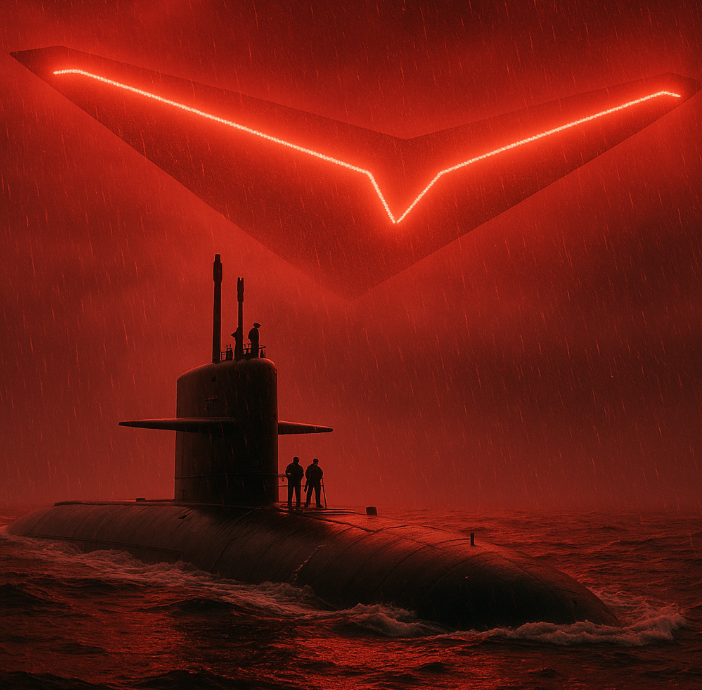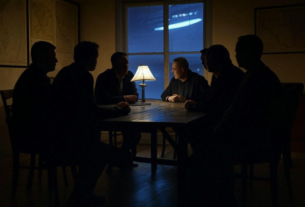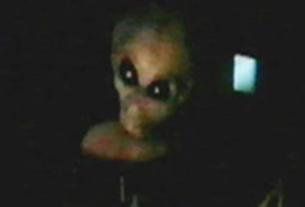On the night of October 24-25, 1989, the USS Memphis, a Los Angeles-class nuclear attack submarine, was involved in a mysterious incident approximately 150 miles off the Florida coast, near Cape Canaveral, during a mission described as a “training exercise” to secure waters for a NASA Space Shuttle launch. The submarine, submerged at a depth of 150 meters (492 feet), suddenly experienced a catastrophic failure of all communication systems, an anomaly for a nuclear-powered vessel designed for reliability. The crew, unable to regain control as the nuclear reactor itself began malfunctioning, received an order from the commanding officer to surface immediately. Upon reaching the surface, the conning party observed a surreal scene: the sky glowed an intense neon-red, heavy rain was falling, and a massive V-shaped or boomerang-shaped object, estimated at half a mile long (about 800 meters or 2,625 feet), hovered 200 meters (656 feet) away, slowly circling the submarine as if observing it.
The object’s presence coincided with severe electronic disruptions—onboard systems went haywire, with permanent damage to the communications array. A red reflection from the UFO mirrored its movements on the water’s surface, adding to the eerie atmosphere. As abruptly as it appeared, the object departed at tremendous speed, disappearing within seconds. Immediately after its exit, the submarine’s electronics returned to normal, except for the irreparably damaged communication systems. The sky also reverted to its natural state, ending the glowing red hue.
The aftermath was marked by a stringent cover-up. The first mate and two other officers, identified as the sole direct witnesses, were summoned to the wardroom and forbidden from discussing the incident. Upon reaching port in Jacksonville, Florida, these witnesses were taken off the submarine, placed under guard in a single room for observation, and subjected to a seven-hour debriefing. A U.S. Navy officer then informed them that what they saw was an “exploding weather satellite,” an explanation the crew found unconvincing given the object’s behavior and effects. They were forced to sign nondisclosure agreements under threat of imprisonment. Within days, the entire crew of the USS Memphis, including the captain, was reassigned to other submarines—a highly unusual move for a tactical vessel, especially after four years of service together. Official logs for the USS Memphis in October 1989 were purged, with only vague entries stating it was “underway for a Dependents’ Cruise,” omitting all events of October 24-25.
The account comes primarily from an anonymous crew member who shared his story years later with ufologist Frank Joseph, as detailed in Joseph’s 2018 book Military Encounters with Extraterrestrials: The Real War of the Worlds. The witness was reportedly inspired to speak out after watching a UFO documentary, breaking years of silence enforced by military protocol. The incident aligns with a broader wave of UFO sightings in 1989, including the Belgian UFO wave, where large, silent, triangular objects were reported by thousands, mirroring the V-shape described by the USS Memphis crew.
Several aspects raise questions about the official narrative. The “exploding weather satellite” explanation doesn’t account for the object’s deliberate circling, its electromagnetic effects, or the absence of debris, which a satellite explosion would likely produce. The rapid crew reassignment and purging of records suggest a concerted effort to suppress the incident, a pattern seen in other military UFO encounters. The submarine’s nuclear propulsion might have attracted the object’s attention, as some researchers speculate UFOs are drawn to nuclear energy, possibly due to its environmental or technological implications. The mission’s connection to a Space Shuttle launch also fuels theories that the UFO was monitoring human space activities, a concern echoed in other UFO cases involving military and space operations.
Skeptics argue the event could have been a classified U.S. military test, perhaps involving electromagnetic weapons or experimental craft, given the USS Memphis’s redesignation in 1989 as an experimental platform for testing advanced technologies like composite hull structures and unmanned underwater vehicles. However, the object’s size, speed, and ability to disrupt a nuclear submarine’s systems far exceed known 1989 technology, even experimental ones. Natural phenomena like ball lightning or atmospheric plasma fail to explain the structured shape, deliberate movements, and specific electromagnetic interference. The lack of corroborating physical evidence—such as recovered debris or additional witnesses beyond the crew—leaves the incident in the realm of anecdotal testimony, but the consistency of the account and the military’s response lend it credibility.
The USS Memphis incident is often cited in discussions of unidentified submerged objects (USOs), a subset of UFO phenomena frequently reported near water. Similar encounters, like the 1968 losses of the USS Scorpion and Soviet K-129 submarines, have been speculatively linked to USOs, though evidence remains inconclusive. The 1989 sighting underscores a persistent question in UFO research: why are such phenomena often associated with military assets, particularly nuclear ones, and what does the government’s secrecy reveal about its understanding of these events?



